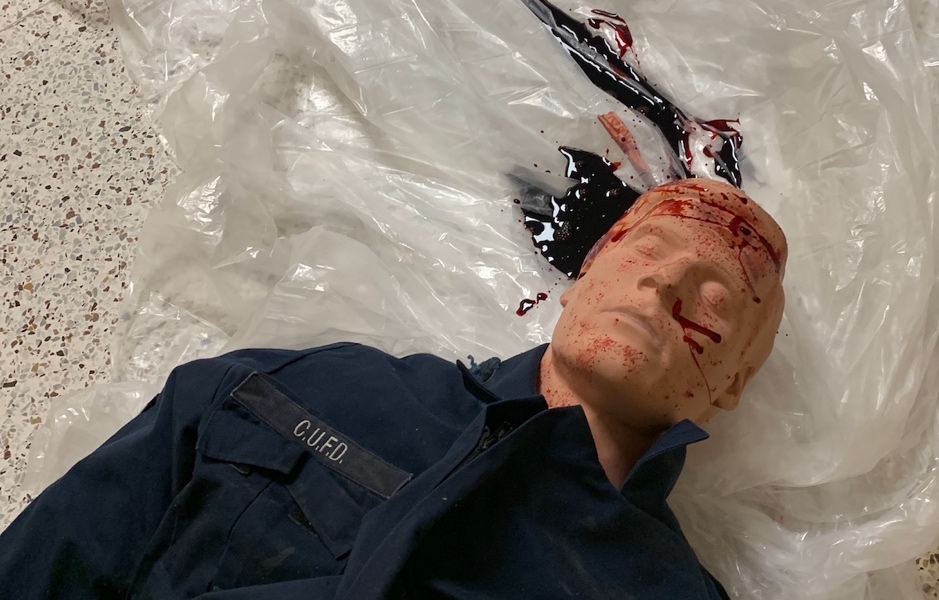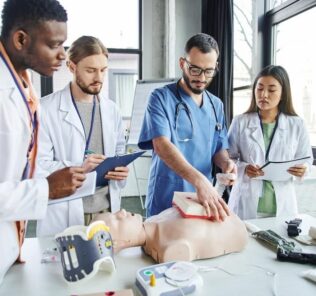It’s Trauma, Man – Getting To Know Trauma Manikins
The term “Trauma Manikin” means different things to different people, and so today guest author Matthew Charnetski, MSMS, NRP, Director of Simulation Learning at NYIT at Arkansas State University and Adjunct Faculty at Drexel University, covers the current state of trauma manikins and their capabilities. From surgical simulators to EMS or Military austere environment tactical combat manikins for TCCC — Matt walks us through it!
There is a good chance that traumatic injuries will become the third largest cause of death around the world by 2020. A myriad of programs are in place to address other illnesses and injuries that rise anywhere near the top ten. Trauma is no different. Those who are involved in emergency care have likely attended one course or another to enhance the care given to patients with traumatic injuries and many metrics have been added for patients with traumatic injures outcomes and evolution of care.
Healthcare simulation allows for patients with dire and dynamic conditions to be emulated. Additionally, medical simulation allows for the applications of life saving interventions and treatments to be delivered, recorded, and assessed in a high frequency, low consequence environment. This has led to the development of a class of manikins frequently referred to as “Trauma Manikins.”
Sponsored Content:
What is a Trauma Manikin?
As with any manikin-based clinical simulation, there are many options from various manufacturers designed to fill the space of a “Trauma Manikin.” There is a tendency for educators and administrators to reach for a manikin that is labelled trauma with the intent that that must be the best to meet their individual need. Moreover, some manikins have been endorsed by different organizations or espoused to be the only manikin that meets the needs of a specific course. While this may be important if one is teaching said specific course, one should not be swayed to purchase something that does not meet their need.
Ultimately, a “Trauma Manikin” is any manikin that might be used to simulate the needed experience and/or set of skills for a specific profession related to the care they ought to deliver in a scenario involving traumatic injury. These manikins may include any or all (maybe more!) of the following simulation in healthcare capabilities:
- Human like weight and issues related to musculoskeletal stabilization and transfer
- Articulatable head and neck to allow for cervical spine manipulation and immobilization
- Hemorrhage control including (but not limited to) exhibiting hemorrhage, ability to cease blood flow with well-aimed direct pressure, tourniquet, or surgical intervention
- Airway intervention including (but not limited to) intubation or other advanced airway devices, needle and/or surgical cricothyrotomy, tracheostomy, insertion of NPA and OPA, and other less common airway interventions
- Needle decompression of the chest
- Chest tube insertion, maintenance, and monitoring
- Pericardiocentesis
- Peritoneal lavage
- Surgical interventions for traumatic injuries
- Various ultrasound examinations
- Simulated open and closed musculoskeletal injuries
- Amputations and various levels of simulated bleeding
- Additional simulation of associated signs and symptoms related to patient presentation after a traumatic injury
- Often these manikins are also “ruggedized” in order to be used in environments that mirror more common point of injury sites
Many different manufacturers have their own take on trauma manikins and provide varying degrees of simulated skills and combinations of the above and other capabilities to meet the needs to different levels of providers.
Sponsored Content:
Some specific examples (note: this list is not exhaustive, does not include task trainers, and only includes manikins specifically billed as “trauma manikins” as opposed to other manikins that may be able to simulate some trauma skills in addition to their normal capabilities):
- CAE Healthcare
- Caesar Trauma Patient Simulator
- Ares Trauma Package
- Surgical Cut Suit and Associated Modules
- ITTS
- TOM Manikin
- Gaumard
- Trauma HAL
- Laerdal
- SimMan 3G Trauma
- Extri Kelly
- Crash Kelly
- Simulab
- Trauma Man
- Trauma FX
- SimBodies
- Pro
- Adult Male
- Adult Female
- Child
- Baby
- SimBodies
- Simulaids
- Rescue Randy
A quick search of peer reviewed literature reveals that initial research in simulation was largely focused on timely and skillful application of technical skills and interventions. In subsequent years, the technical skills are still recognized and the use of nursing simulation to train these skills has increased. However, the research also shows an increased focus on the “non-technical” skills related to teamwork and communication that surround the delivery of the various interventions.
The other clear trend both in peer reviewed literature and in the industry investment in trauma simulation is the ability to simulate more and more complex and realistic trauma scenarios using high-fidelity, sometimes high-technology, manikin-based simulation. This has allowed for the increasing application and coordination of technical and non-technical skills in the delivery of simulated patient care. The application and coordination of this care subsequently lead to more research being done in how to achieve the highest level of quality and efficiency in the delivery of trauma care.
The most exciting part of this? No longer is this research retrospective looking solely at delivered patient care and outcomes. Through the use of high-fidelity, high-technology manikin-based simulation, the research can be performed prospectively. This research is no longer reacting to patient outcomes, instead it is pushing care forward and helping to identify shortfalls before they effect patient care.
One should always consider the needs of their learner when choosing any simulation methodology, Trauma Manikins are no different. Meet the need and the learners will leave better for it.
Subscribe for More Great Medical Simulation Content!
Have a story to share with the global healthcare simulation community? Submit your simulation news and resources here!
Mr. Matt Charnetski PhD(c), MS, NRP, CHSOS, CHSE has been in and around healthcare for his entire life. Academically he started with a BA in Biology from Grinnell College, a Masters in Medical and Healthcare Simulation, and is currently a PhD candidate at Maastricht University in the Netherlands. Geographically, he spent most of his life in and around Iowa, punctuated by time spent in East Africa, Antarctica, wandering the earth, Kazakhstan, Arkansas and now landing in New Hampshire. Mr. Charnetski is currently the Director of Simulation Based Education and Research at Dartmouth Hitchcock Medical Center in Lebanon, NH. Prior to this, Mr. Charnetski was the founding Director of Simulation and an Assistant Professor at Nazarbayev University in Nursultan Kazakhstan and the founding Director of Simulation Learning at NYIT – Arkansas in Jonesboro, AR. Professionally, Mr. Charnetski ha had a winding path through Logistics, Search and Rescue, IT, EMS, and various levels of Simulation to arrive at what he describes as “the best and strangest career I’ve ever had.” He is actively involved with SSH on the Internal Relations Committee and with INACSL in the review of some of the current standards of best practice. Mr. Charnetski also serves as Secretary of the Board of Directors of SimGHOSTS.
Sponsored Content:


















